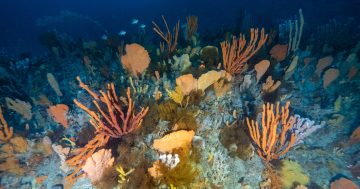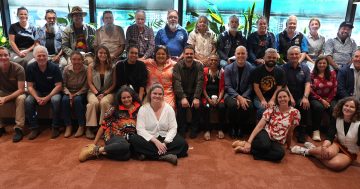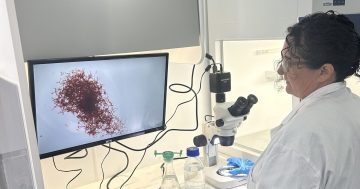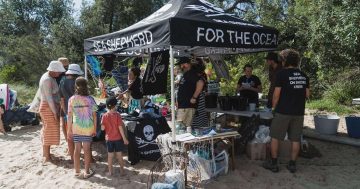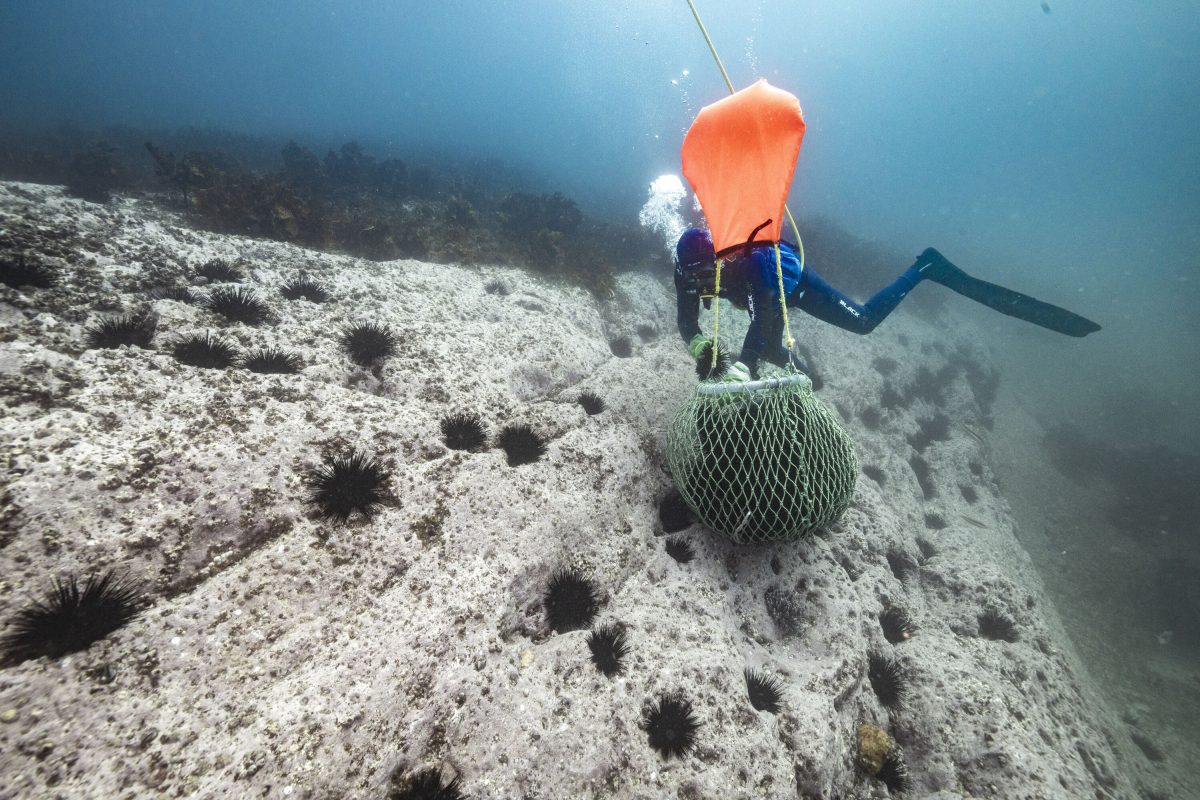
Diving for sea urchins off the coast of Eden. Photo: Stefan Andrews, courtesy Great Southern Reef Foundation.
Second-generation diver Ryan Morris has had to adapt his business as abalone numbers decline and a climate change-induced explosion in long-spined sea urchins pose an existential threat to NSW’s fishing industry.
His Pambula business, South Coast Sea Urchins, is helping to restore the kelp forests of the Great Southern Reef after they were destroyed by the urchins. To sustainably control urchin numbers, he must grow the consumer market for urchins to support a viable sea urchin industry.
The Sydneysider has been coming to the Far South Coast for 30 years and diving along the coast for 25 years.
Mr Morris started as an abalone diver and had a big domestic market for the delicacy, particularly in upmarket restaurants in Sydney.
“When I started diving for sea urchins in 2010, they followed me,” he said. “It was only those high-end restaurants like Rockpool that used them.”
Since Mr Morris started diving, warming waters and a strengthening Eastern Australian Current have enabled the urchin larvae to disperse further south, establishing populations well beyond their historical range.
These voracious feeders and breeders have decimated the kelp forests along 2000 kilometres of coastline.
As the kelp forests disappeared, so did the many marine species that depend on them, including abalone.
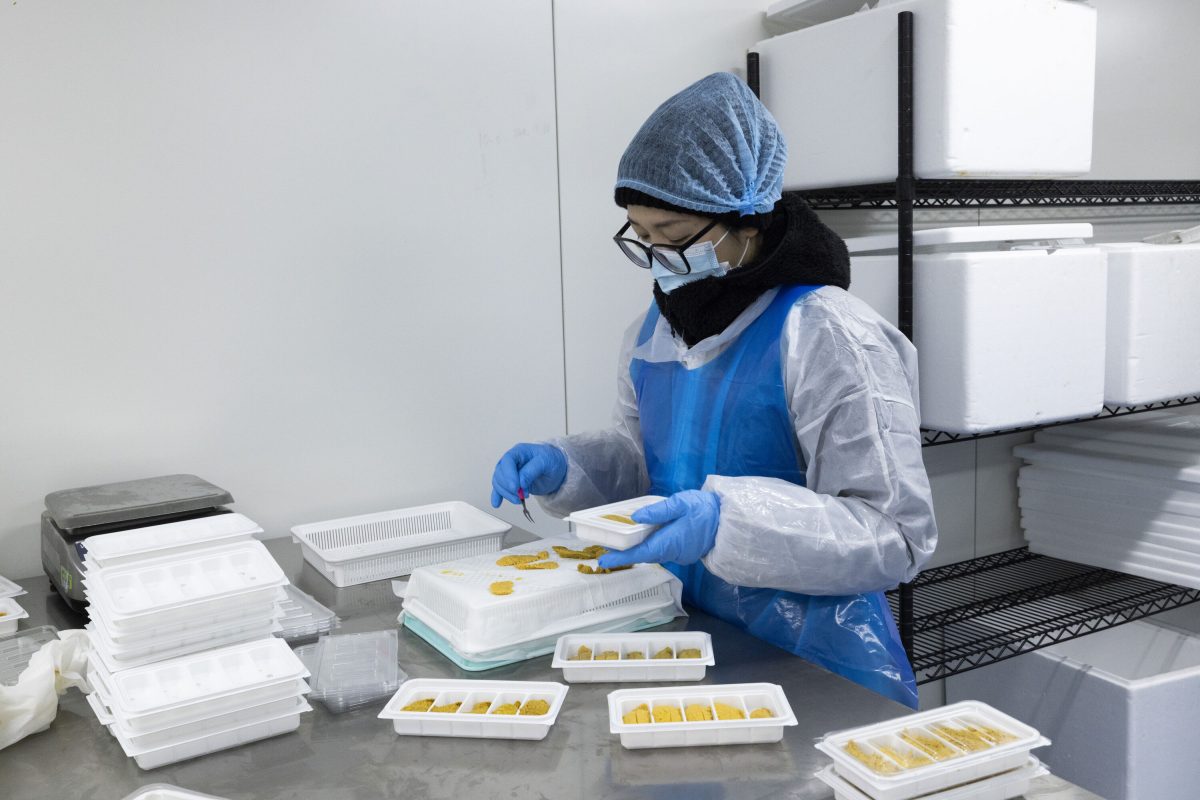
After being dried on paper to remove moisture, the sea urchin is packed in trays for high-end restaurants. Photo: Stefan Andrews, courtesy Great Southern Reef Foundation.
South Coast Sea Urchins employs 50 people and harvests 100 tonnes of sea urchins annually. Around 70 per cent is exported to Japan, Vietnam, Hong Kong, Singapore and Malaysia. The balance is sold domestically.
Mr Morris sees great potential in the export market because sea urchin numbers have fallen in other parts of the world due to overfishing in many areas, “so there is a lot more demand for Australian urchins”.
He would like the sea urchin industry to manage itself rather than being controlled by NSW Department of Primary Industries (Fisheries) to ensure urchins are not overfished in Australia as the market grows.
The domestic market, though, is much harder to crack.
“The market is only so big and the only way you can grow it is with documentaries like White Rock to show the problem and get people to start eating it at home,” he said.
The roe is sold in two forms. Whole pieces are dried on paper to remove the moisture then packed in trays for high-end restaurants. The other form is kina, broken pieces that are packaged in brine. Kina is used in sauces, dips and pasta dishes.
Mr Morris urged people to ask their fishmongers for sea urchins. After being asked a few times, they will start stocking it.
While Australia sells sea urchins into Hong Kong, it cannot reach China, the biggest market for Australia’s rock lobsters and abalone.
“Accessing the Chinese market would go a long way to solving this problem” of urchins destroying kelp forests, Mr Morris said.
He is also concerned that for the past three to four years, Australia has been importing urchins, principally from New Zealand but also from Japan. The latter began when China stopped accepting Japan’s urchins due to the water quality.
The other big barrier to the Australian market’s growth is funding to make it more efficient.
While Australian sea urchin now has a good a reputation, it remains very price sensitive.
“People won’t continue to buy more and more as processing costs increase,” Mr Morris said. “It’s all those 1 per cent increases that can make or break the processing business.”
It is a time-consuming, labour-intensive process to separate the edible roe, which is less than 10 per cent of the urchin, from the waste.
Eden-based Ocean2Earth collects South Coast Sea Urchins’ waste and converts it to high-grade fertiliser which it sells to major hardware outlets and the agriculture industry.
Mr Morris said there was high demand for that, and it could become a big export product over time. There is also potential for the urchin to be a source of purple dye for the textile industry.
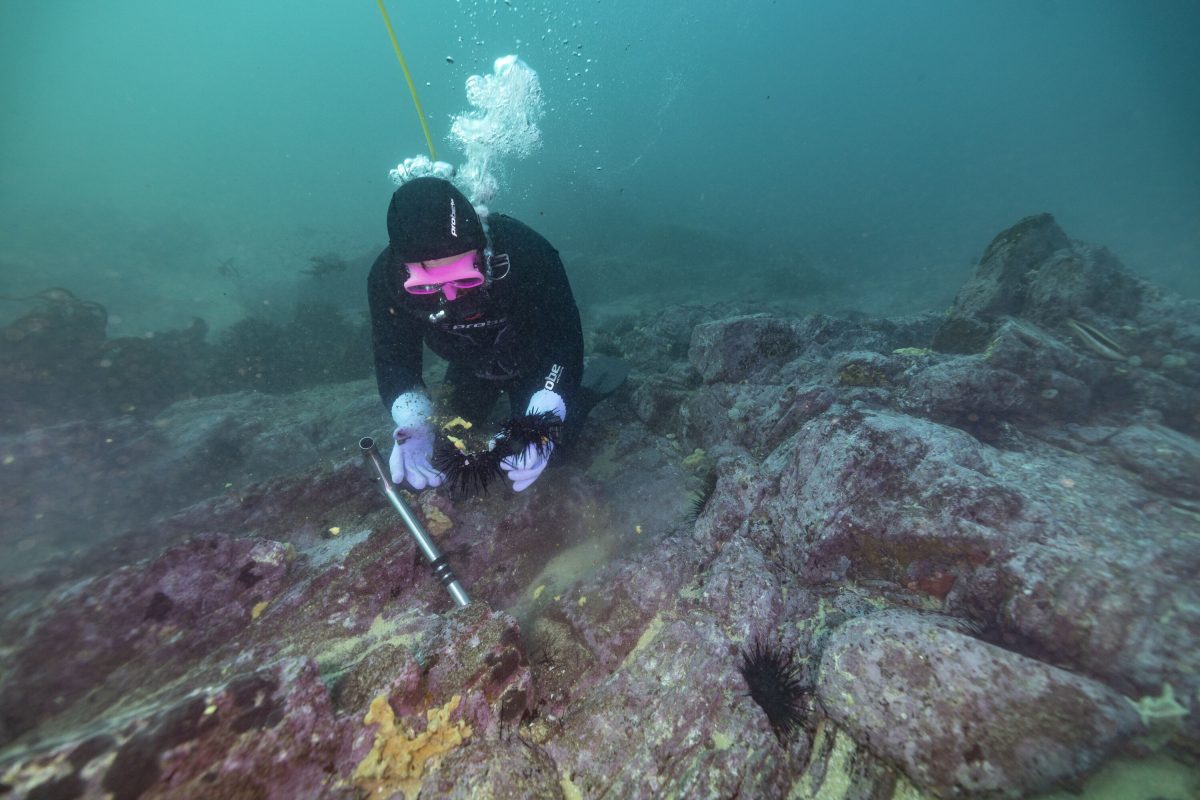
Culling is the last resort to save reefs and bring back kelp. Photo: Stefan Andrews, courtesy Great Southern Reef Foundation.
A federal inquiry in November 2023 recommended that $55 million be invested to fix the sea urchins’ environmental damage.
“We need funding to improve our throughput,” Mr Morris said. “We need some research and development into machines that can operate 24/7.”
A 24/7 operation would process more urchins and process them more quickly so their quality would be higher.
“We need that bit of government help to get us over the line,” Mr Morris said. “We would go from processing 200 tonnes per annum in NSW to 500 tonnes per annum overnight. It would give other processors confidence to enter the market.”







